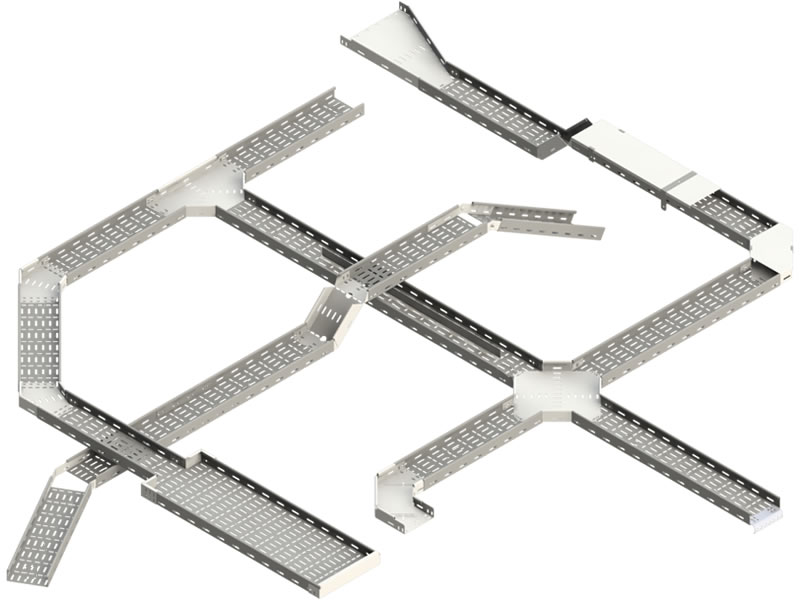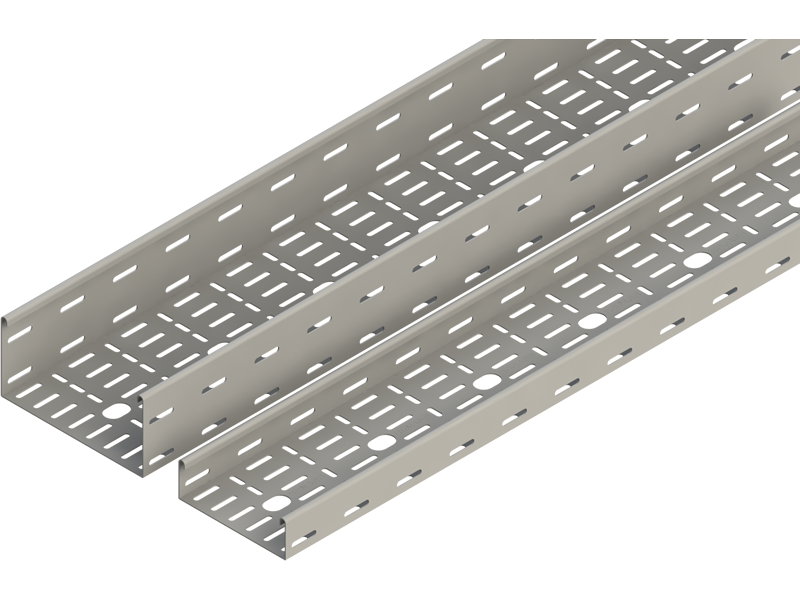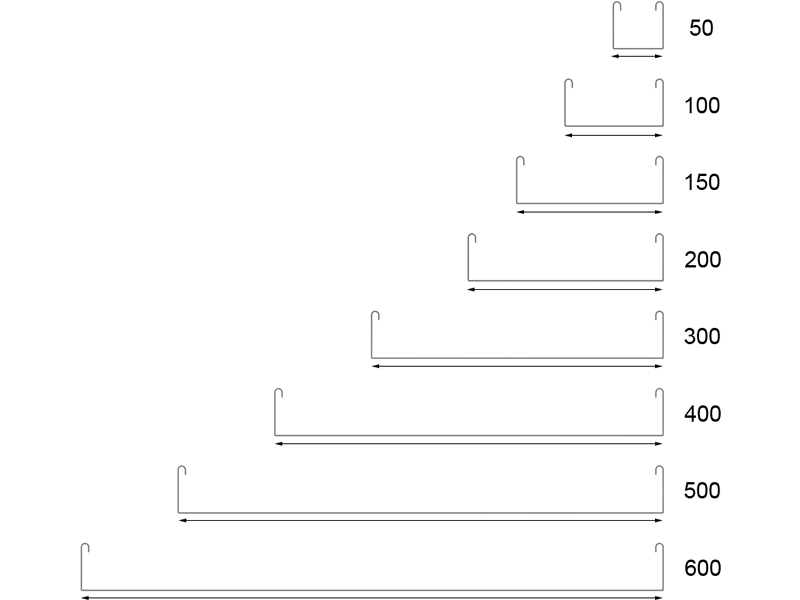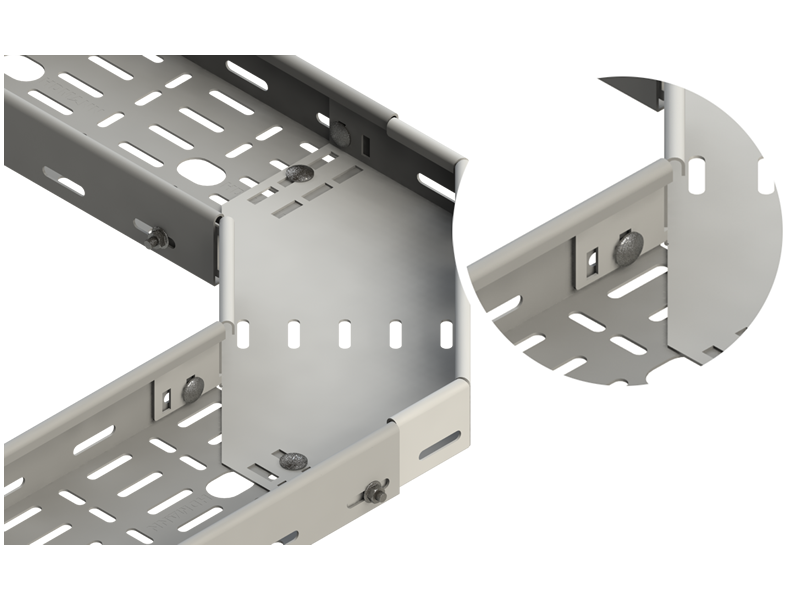Steel Cable Tray
System Overview
HDT steel cable tray, for heavy duty job, comes in standard height of 50 and 100mm.
The HDT Cable Tray System is equipped with side return flanges and designed to eliminate any sharp edges. This cable tray system incorporates slot patterns, enabling efficient equipment placement and convenient access for cable ties and other fixtures. It is offered in 50 and 100 mm heights, with the option for custom heights upon request.
The HDT Cable Tray System is equipped with side return flanges and designed to eliminate any sharp edges. This cable tray system incorporates slot patterns, enabling efficient equipment placement and convenient access for cable ties and other fixtures. It is offered in 50 and 100 mm heights, with the option for custom heights upon request.

1. straight section
2. horizontal elbow
3. horizontal tee
4. horizontal cross
5. flexible riser
6. reducer
7. splice connector
8. horizontal splice connector
9. vertical splice connector
10. flexible horizontal elbow
11. barrier strip
12. blind end
13. reduction splice connector
14. straight flat cover
15. heavy duty cover clamp
16. universal cover clamp
17. drop out plate
2. horizontal elbow
3. horizontal tee
4. horizontal cross
5. flexible riser
6. reducer
7. splice connector
8. horizontal splice connector
9. vertical splice connector
10. flexible horizontal elbow
11. barrier strip
12. blind end
13. reduction splice connector
14. straight flat cover
15. heavy duty cover clamp
16. universal cover clamp
17. drop out plate
Basic Parameters
| Material | Mild steel/SS316L/Pre-gal steel |
| Finish | HDG/Pickling passivation/Electroplate/Powdercoating |
| Certification | UL/CE/GOST-R/ABS/CSA/SGS/BV/DNV |
| Width | 50mm/75mm/100mm/150mm/200mm/300mm/400mm/500mm/600mm |
| Height | 50mm/100mm |
| Length | 3000mm |
Design Details
Different Height

Different tray heights to give more choice for loading space availability. Return flange for increased load capability. HDT cable tray comes in standard heights of 50 and 100 mm. Other heights are available on request.
Different Width

Different tray widths to give more choice for loading space availability. HDT cable tray comes in standard widths of 50, 100, 150, 200, 300, 400, 500 and 600 mm. Other widths are available on request.
Integrated Connector Fitting

Integrated connection design saves time and effort to install, requires no extra connecting splice plate to save costs.
STEEL CABLE TRAY SUPPORT SYSTEM
We can supply heavy duty steel cable trays in 2 different heights, our stee cable trays are designed with double return flanges on both sides to avoid damage the cables and a complete range of connection accessories are supplied to fit our steel cable trays.
The chromium oxide layer of stainless steel makes stainless steel cable tray, cable ladder has good corrosion resistance. Then, for welded stainless steel products, welding will deplete the chromium oxide layer. In order to solve this problem, the welded stainless-steel products need to be pickled and passivated after welding.
Hot-dip galvanized cable trays, or cable ladders, are galvanized after the product is made. The cutting and drilling operation will cause the exposed metal edges to corrode immediately. It should be repaired after the product is cut and drilled and deburred. Pre-plating Zinc products do not require treatment as they are not normally used in heavily corrosive environments. A common practice for restoration is to spray with zinc-rich paint.
The dead load includes the weight of all cables pipes and equipment installed on the cable trays or cable ladders, and also includes the weight of the cable tray, cable ladder itself and the weight installation accessories such as cover plates. The increased need for cable reinforcement loads due to future increases in building services should be taken into account when designing cable trays. Usually, a 25% increase in physical space and load is required to accommodate future cable or installation requirements that may be added. The weight of the cable can be obtained from the cable manufacturer. In some cases, accurate information on the cable may be lacking. The recommended practice is to select the cable ladder, cable tray size and to estimate the maximum weight of the cable, and ensure that the maximum load of the selected cable ladder, cable tray size can cover the cable. maximum weight.
During the design stage of steel cable tray system and planning the cable ladder, cable tray installation stage the selection of suitable materials and finishes is a key issue in the specification stage. The correct choice of finishes and materials has a long-term impact on the service life and aesthetics of the cable tray.
Corrosive maintenance of cable trays is impractical, so the correct material and surface treatment should be selected in the specification to ensure lifetime corrosion protection within the expected range with a margin of safety. Therefore, the corrosion resistance of the environment should be established to select the correct material and surface treatment.
The chromium oxide layer of stainless steel makes stainless steel cable tray, cable ladder has good corrosion resistance. Then, for welded stainless steel products, welding will deplete the chromium oxide layer. In order to solve this problem, the welded stainless-steel products need to be pickled and passivated after welding.
Hot-dip galvanized cable trays, or cable ladders, are galvanized after the product is made. The cutting and drilling operation will cause the exposed metal edges to corrode immediately. It should be repaired after the product is cut and drilled and deburred. Pre-plating Zinc products do not require treatment as they are not normally used in heavily corrosive environments. A common practice for restoration is to spray with zinc-rich paint.
